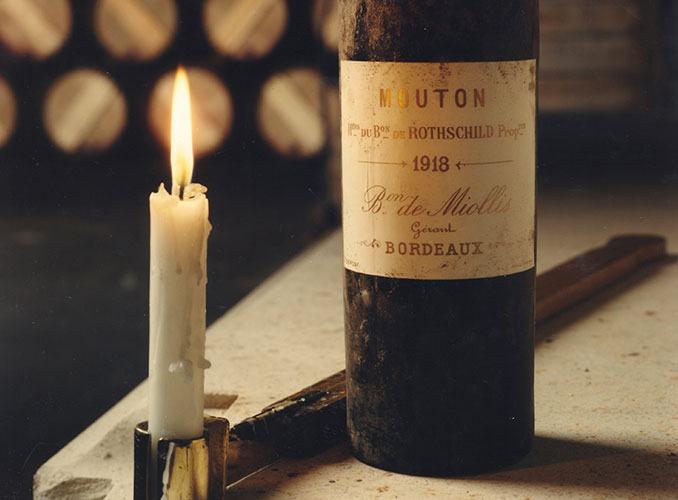July 8, 2024
The Fascination with Vintage Wines: Why Older Vintages Are Sought After and Their Unique Appeal

Vintage wines hold a special allure for wine collectors and enthusiasts alike. The term "vintage" refers to the year in which the grapes were harvested and the wine was produced, and older vintages are often revered for their unique characteristics and historical significance. This article delves into the fascination with vintage wines, exploring why older vintages are highly sought after and what makes them uniquely appealing.
The Allure of Aging
The primary reason vintage wines are so coveted is their ability to age gracefully over time. As wines age, their flavours and aromas develop, often becoming more complex and nuanced. The ageing process allows the wine to evolve, revealing layers of depth that are not present in younger wines.
During the ageing process, the primary fruit flavours in wine begin to mellow and integrate with secondary and tertiary notes. These can include earthy, nutty, or spicy characteristics, resulting in a more sophisticated and harmonious profile. In red wines, tannins are responsible for the astringent, mouth-drying sensation. Over time, these tannins soften, leading to a smoother, more velvety mouthfeel. This transformation is particularly prized in vintage wines, as it enhances their drinkability.
The bouquet of a wine also evolves with age. Fresh, fruity aromas can give way to more complex scents, such as leather, tobacco, or forest floor. This aromatic evolution adds to the wine's allure and complexity, making each sip a journey through time.
Historical and Cultural Significance
Vintage wines often carry a sense of history and cultural significance. Each vintage represents a snapshot of a particular year, capturing the climatic conditions, vineyard practices, and winemaking techniques of that time. Older vintages can provide a historical context, offering insight into the winemaking practices and environmental conditions of the past. They serve as a testament to the craftsmanship of previous generations and the evolution of viticulture.
Many vintage wines are produced by historic wineries with long-standing traditions. These wines embody the cultural heritage and legacy of the regions they come from, making them highly desirable to collectors and enthusiasts. Every bottle of vintage wine tells a story. Whether it’s the challenges faced during a difficult growing season or the triumphs of an exceptional harvest, these stories add to the wine’s mystique and appeal.
Scarcity and Exclusivity
The scarcity and exclusivity of vintage wines significantly contribute to their desirability. Older vintages are often produced in limited quantities, and as bottles are consumed over the years, they become increasingly rare. Many vintage wines are produced in small quantities, particularly those from single vineyards or specific plots. This limited production ensures exclusivity and adds to the wine's allure.
As vintage wines are enjoyed and consumed, the number of available bottles decreases. This natural depletion makes remaining bottles more valuable and sought after. Possessing and enjoying a rare vintage wine is often seen as a mark of prestige and connoisseurship. Collectors take pride in their ability to acquire and appreciate these exclusive wines, adding to their desirability.
The Role of Provenance
Provenance, or the history of ownership and storage conditions of a wine, plays a crucial role in the value and appeal of vintage wines. Well-documented provenance can significantly enhance a wine's desirability and market value. Provenance provides assurance of a wine’s authenticity and history. Collectors seek wines with clear provenance to ensure they are genuine and have been stored under optimal conditions.
Proper storage is essential for preserving the quality of vintage wines. Wines with impeccable provenance, stored in ideal conditions, are more likely to retain their desirable characteristics and age gracefully. Provenance is particularly important in the auction market. Wines with well-documented provenance often fetch higher prices at auction, as buyers are willing to pay a premium for the assurance of quality and authenticity.
Tasting the Past
One of the most compelling aspects of vintage wines is the opportunity to taste a piece of history. Each bottle serves as a time capsule, offering a sensory experience that connects the present with the past. Tasting an older vintage is a unique sensory journey. The evolved flavours and aromas provide a different experience compared to younger wines, offering a glimpse into the wine’s development over the years.
Vertical tastings, which involve sampling multiple vintages of the same wine, allow enthusiasts to compare and contrast different years. This practice highlights the influence of vintage variation and the evolution of the wine over time. Vintage wines are often chosen to mark special occasions and milestones. Opening a bottle from a significant year adds a layer of meaning and celebration, creating memorable experiences.
